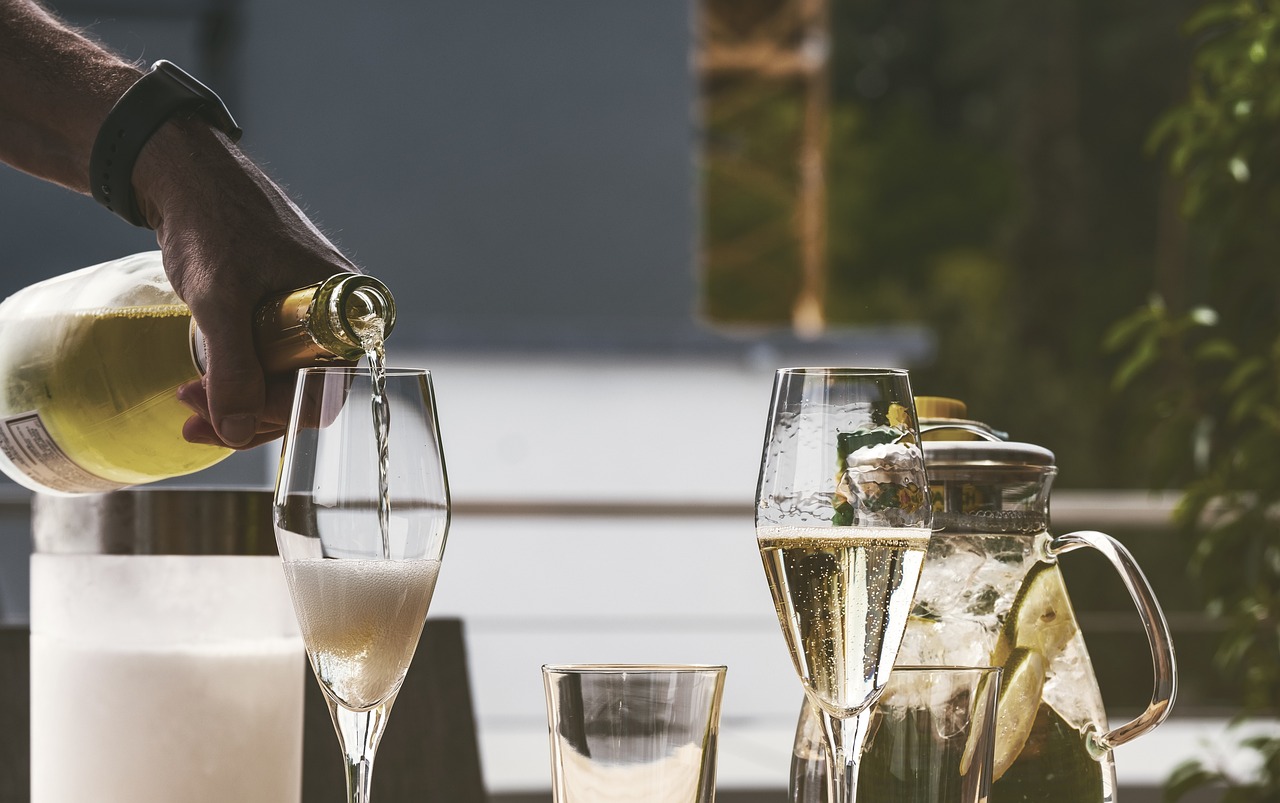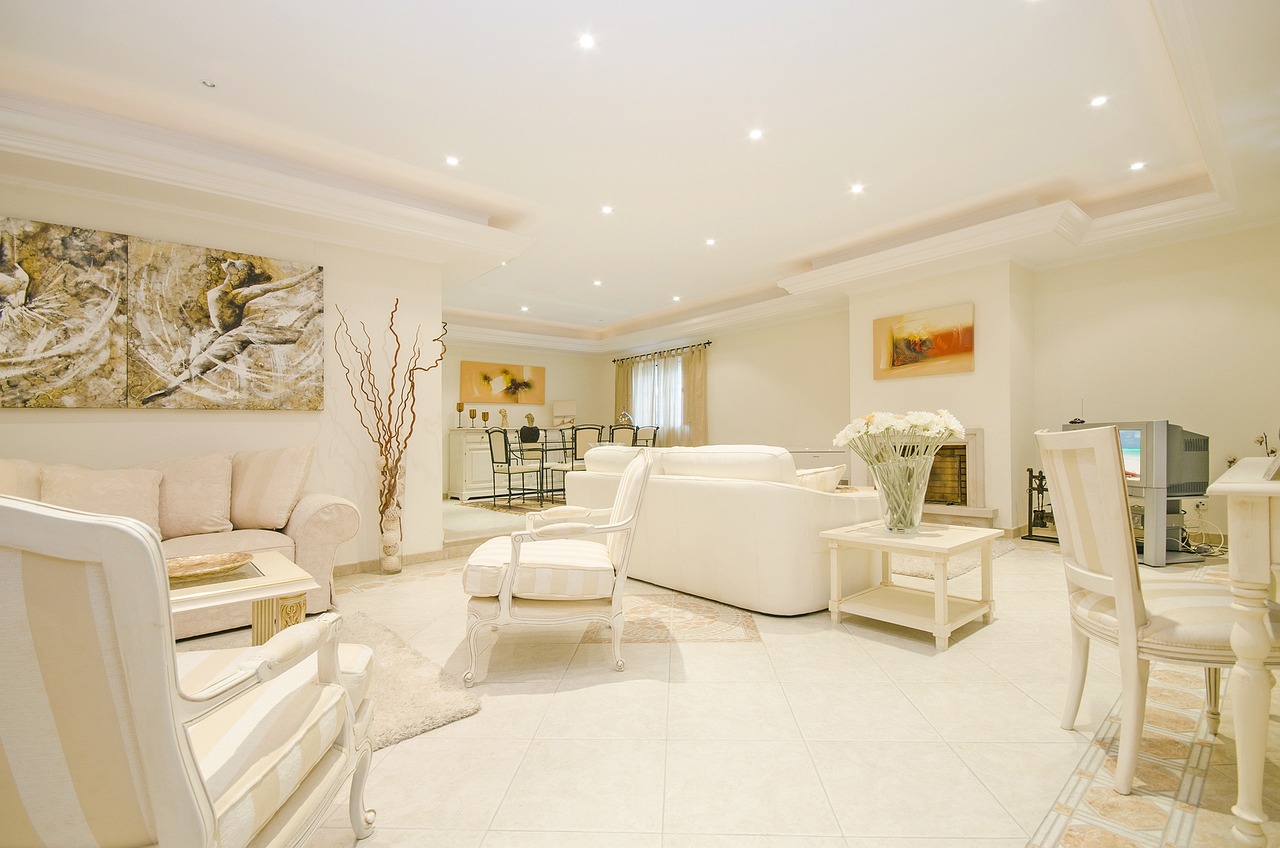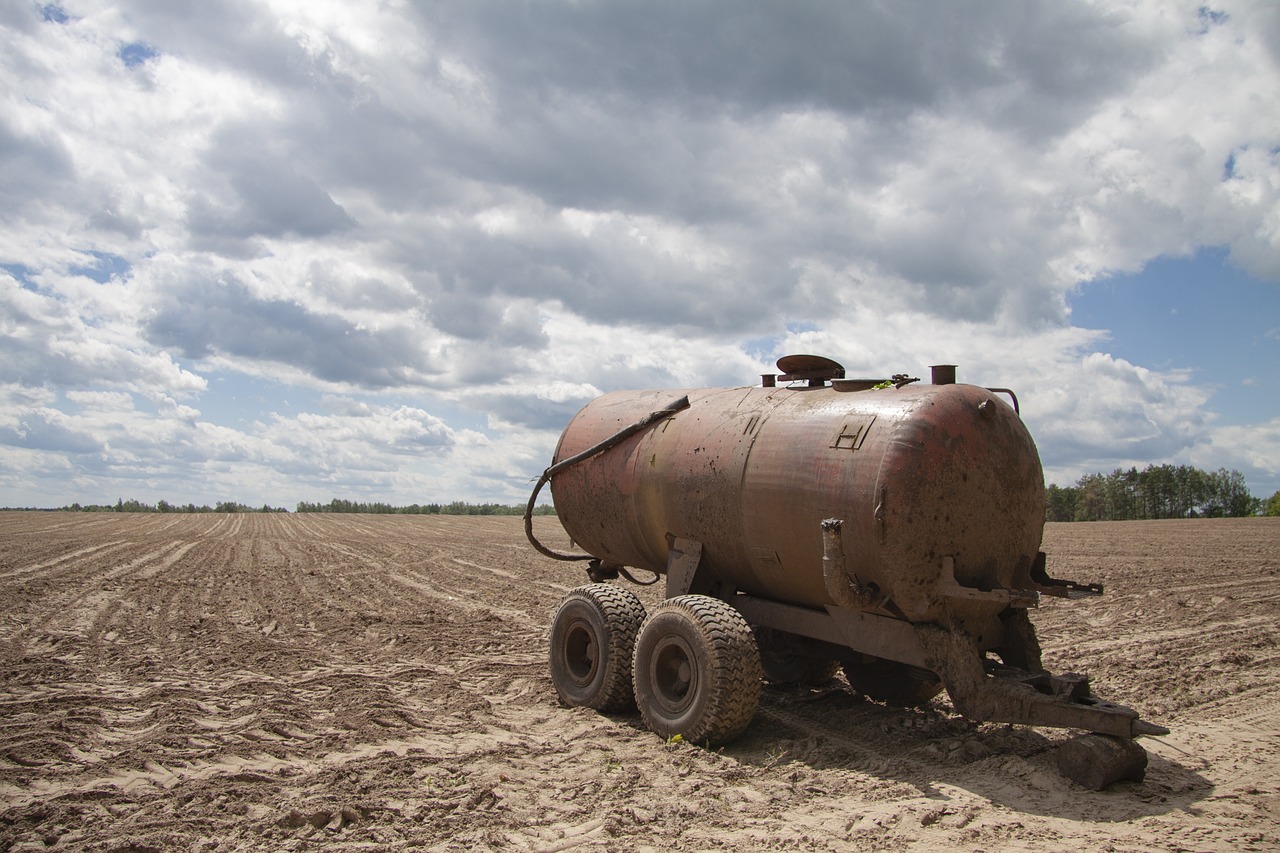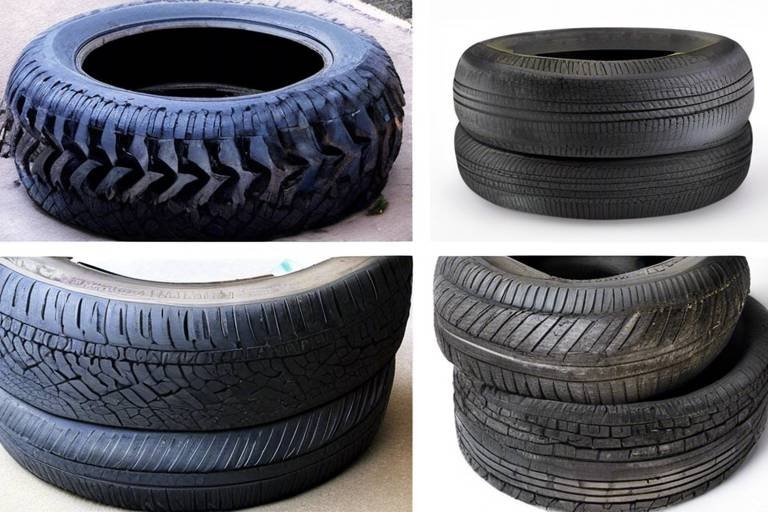Upcycle Wine Barrels into Comfy Seats
Have you ever wondered what happens to old wine barrels after they've served their purpose? Instead of letting them gather dust in a corner, why not transform them into stylish and comfy seating options for your home or garden? Upcycling wine barrels is not just a creative endeavor; it’s a way to breathe new life into beautiful wood while also being kind to the environment. Imagine cozying up on a barrel chair under the stars or placing a barrel bench in your garden as a conversation starter. This article explores the creative process of transforming these rustic treasures into functional furniture that adds a unique flair to your space.
So, what exactly is upcycling? At its core, upcycling involves taking materials that might otherwise be discarded and creatively reusing them to create something new and valuable. It’s like giving a second chance to items that have a story to tell. When it comes to wine barrels, the benefits of upcycling are twofold: you get to reduce waste and unleash your personal creativity. Plus, there's an undeniable charm in using repurposed materials that can make your home feel warm and inviting. Think of it this way: every time you sit on a barrel chair, you're not just enjoying a seat—you're experiencing a piece of history.
Choosing the right wine barrels is crucial for any successful upcycling project. Not all barrels are created equal, and selecting the best one can make a significant difference in the final product. When looking for barrels, consider factors such as the barrel's condition, wood type, and size. A well-maintained barrel can provide a sturdy base for your seating, while the right wood type can enhance the aesthetic appeal. For instance, oak barrels are known for their durability and rich grain, making them a popular choice for upcycling projects.
Before you dive into purchasing, it's essential to inspect the barrels for quality. You wouldn’t want to end up with a barrel that’s more trouble than it’s worth! Here are a few tips to check for:
- Leaks: Ensure there are no leaks that could compromise the integrity of your seating.
- Rot: Look for signs of rot or mold, which can weaken the structure.
- Cleanliness: Ensure the barrel is clean and free from any chemicals or residues.
By taking the time to inspect the quality of the barrels, you can ensure your project starts with the best materials, leading to a durable and attractive final product.
When sourcing wine barrels, you’ll want to distinguish between authentic barrels and replicas. Authentic barrels often have distinct characteristics, such as:
- Branding Marks: Look for stamps or branding that indicate the barrel's origin.
- Wood Grain: Genuine barrels typically showcase a unique wood grain that adds to their charm.
- Aging Signs: Authentic barrels may show signs of aging, which can enhance their aesthetic appeal.
By understanding these characteristics, you can elevate your upcycling project’s authenticity and ensure that your new seating piece truly stands out.
Sourcing wine barrels can be an adventure in itself! Consider reaching out to local wineries or distilleries, as they often have barrels available for sale or even for free. Additionally, online marketplaces can be a treasure trove for finding barrels. Building connections with suppliers can not only provide you with quality materials but also enrich your upcycling journey with stories and insights into the barrels' previous lives.
Preparation is key to a successful transformation of your wine barrels into comfy seats. Start by giving the barrels a thorough cleaning to remove any residues. Next, consider sanding the surface to ensure it’s smooth and free from splinters. Treating the wood with a protective finish can also enhance its durability and appearance. This step is crucial because it ensures that your final product is not only safe to use but also comfortable and long-lasting.
Now that you have your barrels prepped and ready, let’s dive into some exciting design concepts for your new seating. From rustic charm to modern flair, the possibilities are endless!
Barrel chairs have become a popular choice for upcycling projects. The design process involves shaping the barrel, cutting it appropriately, and adding cushions for that extra touch of comfort. Imagine sinking into a cozy barrel chair with a glass of wine in hand, surrounded by friends and laughter!
A barrel bench can serve as a stunning focal point in any outdoor area. The construction process involves securing the barrels together, ensuring durability while maintaining aesthetic appeal. Picture this: a beautifully crafted barrel bench under a canopy of trees, inviting everyone to sit and enjoy the great outdoors.
Q: How do I maintain my upcycled wine barrel furniture?
A: Regular cleaning and applying a protective finish every couple of years will help maintain the appearance and durability of your furniture.
Q: Can I use wine barrels for indoor furniture?
A: Absolutely! Upcycled wine barrel furniture can add a unique touch to your indoor spaces, just make sure to treat the wood properly to prevent any moisture issues.
Q: Where can I find wine barrels?
A: Local wineries, distilleries, and online marketplaces are great places to start your search for authentic wine barrels.

Understanding the Upcycling Concept
Upcycling is more than just a trendy buzzword; it’s a creative revolution that encourages us to rethink how we view waste. Instead of tossing out old items, upcycling invites us to breathe new life into them, transforming what was once deemed useless into something beautiful and functional. Think of it as giving your discarded treasures a second chance at life! By creatively reusing materials, we not only reduce waste but also tap into our personal creativity, allowing our imagination to run wild.
When it comes to upcycling, the charm of repurposed materials, especially items like wine barrels, cannot be overstated. These barrels carry a story, a history that adds character to any project. Imagine sitting on a chair made from a barrel that once held fine wine, or using a bench that was part of a vineyard’s legacy. It's like owning a piece of history while contributing to a more sustainable future.
There are numerous benefits to embracing the upcycling concept. Here are a few key points to consider:
- Environmental Impact: Upcycling significantly reduces the amount of waste sent to landfills. By reusing materials, we conserve resources and minimize our carbon footprint.
- Personal Creativity: Upcycling allows you to express your unique style. Each project can be tailored to your taste, turning ordinary items into extraordinary creations.
- Cost-Effective: Instead of buying new furniture or decor, upcycling can save you money. Often, the materials needed are inexpensive or even free!
- One-of-a-Kind Pieces: Upcycled items are often unique, ensuring that your home reflects your personality and creativity.
In a world that constantly pushes for newness, upcycling reminds us of the beauty in what we already have. It’s a sustainable choice that resonates with many, especially in today’s eco-conscious society. So, the next time you come across an old wine barrel, don’t just think of it as waste; envision the stunning seating that could emerge from it. With a little creativity and effort, you can turn that barrel into a comfy seat that not only enhances your space but also tells a story.

Choosing the Right Wine Barrels
When it comes to upcycling wine barrels into stunning seating options, the first step is to choose the right barrels. This choice can significantly influence not only the aesthetic of your final product but also its durability and comfort. You want to ensure that the barrels you select are not just visually appealing but also structurally sound and suitable for your specific project. So, what should you look for? Let's dive into some key factors to consider when making your selection.
First and foremost, the condition of the barrel is crucial. You wouldn’t want to start your upcycling journey with a barrel that’s falling apart, right? Look for barrels that are free from significant damage, such as cracks or deep gouges. It's also important to check for any signs of rot, as this can compromise the integrity of the wood. A good barrel should feel solid when you knock on it, and it should have a nice, rich scent of the wine that once filled it. A barrel that has been well-maintained will not only look better but will also offer a more robust structure for your seating project.
Next, consider the type of wood used in the barrel. Most wine barrels are made from oak, which is known for its strength and durability. Oak barrels can add a rustic charm to your seating while also providing a sturdy base. However, different types of oak can yield different results in terms of appearance and longevity. For instance, American oak tends to be more porous and can impart a sweeter flavor to the wine, while French oak is denser and often considered more elegant. If you’re aiming for a specific aesthetic, the type of wood will play a significant role in achieving that vision.
Another important factor is the size of the barrel. Depending on the space you have available and the type of seating you wish to create, the size can make a huge difference. For example, if you’re planning to build a cozy barrel chair, a smaller, half-barrel may be ideal. On the other hand, if you envision a bench for your garden, you might want to opt for a full barrel or even multiple barrels for added length. Always measure your space before making a purchase to ensure that your seating will fit perfectly into your intended area.
Lastly, don’t forget about the source of your barrels. While you can find them at many local wineries or distilleries, it’s also worth checking online marketplaces. Building relationships with local suppliers can lead to better deals and even unique finds. Additionally, some places may offer barrels that have already been cleaned and prepared for upcycling, saving you time and effort in the long run. You might even discover a hidden gem that adds character to your project!
In summary, choosing the right wine barrels involves a careful consideration of their condition, wood type, size, and source. By paying attention to these factors, you can ensure that your upcycling project not only looks great but also stands the test of time. So, are you ready to embark on your journey of transforming these beautiful barrels into comfy seats that will impress your guests and enhance your living space?
- What should I look for in a wine barrel? Look for barrels that are structurally sound, free from rot, made of durable wood like oak, and the right size for your project.
- Where can I find wine barrels for upcycling? You can find wine barrels at local wineries, distilleries, or online marketplaces. Building relationships with suppliers can also help you find the best options.
- Can I use any type of barrel for seating? While you can technically use any barrel, it's best to choose those made from oak for durability and aesthetic appeal.
- How do I know if a barrel is authentic? Authentic wine barrels will typically have markings or stamps from the winery, and they should have a distinct wine aroma.

Inspecting Barrel Quality
When it comes to upcycling wine barrels into comfy seats, the first step is ensuring that the barrels you choose are of high quality. After all, you want your new furniture to be not only stylish but also durable and safe. So, how do you determine whether a barrel is worth its weight in wine? Start by conducting a thorough inspection that focuses on several key aspects.
First and foremost, structural integrity is crucial. Give the barrel a good once-over, looking for any signs of damage such as cracks or dents. A barrel that's seen better days might not hold up under the weight of a seated person, so look for barrels that are intact and solid. Remember, a barrel that has been well-maintained will not only be safer but will also provide a more aesthetically pleasing finish once it's transformed into a seat.
Next, you'll want to check for leaks. While some minor leaks can be addressed during the upcycling process, significant leaks could compromise the barrel's structure. To test for leaks, you can fill the barrel with water and let it sit for a few hours. If you notice any water escaping, that barrel may not be the best candidate for your project.
Another important factor to consider is rot. The wood used in wine barrels is typically quite durable, but exposure to the elements can lead to decay. Look for signs of mold or soft spots that indicate the wood is breaking down. If you find any, it’s best to pass on that barrel and look for a healthier option.
In addition to these physical characteristics, you should also consider the cleanliness of the barrel. Since these barrels once held wine, you want to ensure that they are free from any lingering odors or residues that could affect the comfort of your seating. A good cleaning with a mixture of vinegar and water can help eliminate any unwanted smells and prepare the wood for refinishing.
Lastly, if you’re unsure about the barrel's quality, don’t hesitate to ask the seller about its history. Knowing whether the barrel has been previously used for wine, spirits, or even as a decorative piece can give you valuable insight into its condition and suitability for upcycling.
In summary, inspecting barrel quality is a crucial step in the upcycling process. By paying attention to structural integrity, leaks, rot, cleanliness, and the barrel's history, you can ensure that your project starts off on the right foot. Remember, a well-chosen barrel can not only enhance the aesthetic appeal of your space but also provide a comfortable seating option that stands the test of time.
Q: How can I tell if a wine barrel is authentic?
A: Look for markings from the winery, as well as any signs of wear that indicate it has been used. Authentic barrels often have a unique patina that reflects their history.
Q: Are there specific types of wood that are better for upcycling?
A: Oak is the most common type of wood used for wine barrels due to its durability and aesthetic appeal. However, other woods like cedar can also be used, depending on your design preferences.
Q: Can I use a barrel that has been damaged?
A: It depends on the extent of the damage. Minor cosmetic issues can often be fixed, but significant structural damage may compromise the safety and longevity of your seating.

Identifying Authentic Barrels
When diving into the world of upcycling, one of the most critical steps is ensuring that the wine barrels you choose are authentic. Authentic barrels not only enhance the aesthetic appeal of your project but also provide a sense of history and quality that replicas simply cannot match. So, how do you distinguish between the real deal and a mere imitation? Let's break it down.
First and foremost, look for the brand markings. Genuine wine barrels typically have stamps or branding from the winery that produced them. These markings often include the winery's name, the type of wine previously stored, and sometimes even the year of production. If you spot these details, you're likely looking at an authentic barrel. On the other hand, replicas may lack this kind of branding or have generic markings that don't reference any specific winery.
Another key indicator is the wood quality. Authentic wine barrels are made from high-quality oak, which not only contributes to the flavor of the wine but also ensures durability. When inspecting a barrel, feel the wood; it should be smooth and free of excessive knots or imperfections. If the wood feels rough or seems to be of inferior quality, it might be a sign that you’re dealing with a replica.
Additionally, consider the barrel's age. Authentic barrels often have a distinct patina due to years of use, which adds character to your upcycling project. Check for signs of wear, such as fading or slight discoloration, which can indicate that the barrel has been aged properly. In contrast, replicas may look overly pristine or manufactured, lacking the unique charm that comes with age.
Lastly, if you're unsure about the authenticity, don't hesitate to ask the seller for provenance information. A reputable seller should be able to provide you with details about the barrel’s history, including where it was sourced and what it was used for. If they can’t provide this information, it might be a red flag.
In summary, identifying authentic wine barrels involves a keen eye for detail. Look for brand markings, assess the wood quality, check for signs of age, and always ask for provenance. By following these tips, you’ll ensure that your upcycling project not only looks stunning but also possesses a genuine story and character.
- How can I tell if a wine barrel is suitable for outdoor use? Look for barrels that are made from durable wood and have been treated to withstand the elements. It's also wise to apply a protective sealant to enhance longevity.
- Can I use a barrel that previously contained a different type of liquid? While it’s possible, it’s best to use barrels that have been specifically used for wine to avoid any unwanted flavors or odors in your project.
- What tools do I need to upcycle a wine barrel into a seat? Basic tools include a saw, sandpaper, wood glue, and cushions for comfort. Depending on your design, you may need additional materials like paint or varnish.

Finding Barrels Locally
When it comes to upcycling wine barrels, sourcing them locally can be both an exciting adventure and a sustainable choice. Imagine driving through the countryside, the sun shining down, and stumbling upon a quaint winery that has just the barrels you need! Not only does this approach support local businesses, but it also allows you to inspect the barrels firsthand, ensuring you get the best quality for your project.
To kickstart your search, consider visiting local wineries and distilleries. Many of these establishments are more than happy to part with their old barrels, especially if they know they’re going to be repurposed into something beautiful. Don’t be shy—ask if they have any available for sale or even for free! You might be surprised at how willing they are to help. Plus, engaging with these local businesses can lead to fantastic networking opportunities. You might even discover some hidden gems, like small-batch distilleries that are eager to sell their used barrels.
Another great option is to check out online marketplaces. Websites like Craigslist, Facebook Marketplace, or even specialized forums can be treasure troves for finding wine barrels. When browsing these platforms, make sure to filter your search by location to find barrels that are nearby. It’s a good idea to reach out to sellers directly to inquire about the condition of the barrels and whether they can provide any history about their use. This not only gives you a clearer picture of what you’re buying but also adds a story to your upcycled piece!
Additionally, consider connecting with local woodworking or craft groups. These communities often have leads on where to find quality barrels or might even have some available for sale. Plus, you can gain valuable tips and tricks from fellow enthusiasts who have tackled similar projects. Engaging with these groups can also inspire you with new ideas for your upcycling journey.
In summary, finding wine barrels locally can be an enjoyable and rewarding experience. Whether you’re visiting charming wineries, exploring online marketplaces, or connecting with local craftsmen, the journey is just as important as the destination. So grab your phone, make some calls, and get ready to embark on a creative adventure that not only beautifies your space but also contributes to a more sustainable world.

Preparing the Barrels for Upcycling
When it comes to transforming those old wine barrels into stunning seating options, preparation is absolutely key. Think of it like cooking a gourmet meal; if you don’t start with the right ingredients, the final dish won’t taste nearly as good! So, let’s dive into the essential steps to get your barrels ready for their new life.
First things first, you’ll need to give your barrels a thorough cleaning. After all, you want to ensure that any residual wine or other substances don’t interfere with your upcycling project. Start by rinsing the barrels with water and scrubbing the interior and exterior surfaces with a mild detergent. This step not only removes dirt but also helps eliminate any lingering odors. Once cleaned, let the barrels dry completely; moisture can lead to mold or rot, which is the last thing you want.
Next up is sanding. Just like a rough diamond needs polishing, your barrels will benefit from a good sanding to smooth out any rough spots and splinters. Use medium-grit sandpaper to start, and then switch to fine-grit for a silky finish. This process not only enhances the look of the wood but also prepares it for any stains or finishes you might want to apply later. Remember, a well-sanded barrel will not only feel good but will also look fabulous in your space!
After sanding, it’s time to treat the wood. Applying a wood conditioner or sealant can help protect your barrels from the elements, especially if you plan to use them outdoors. Choose a product that is eco-friendly and safe for indoor use. This step is crucial for ensuring the longevity of your upcycled furniture. Additionally, if you’re feeling adventurous, you can even stain or paint the barrels to match your home decor. The possibilities are endless!
Lastly, don’t forget about safety. If you’re planning to add cushions or other upholstery, make sure to use materials that are fire-resistant and easy to clean. It’s all about creating a comfy and safe seating experience for you and your guests. With these preparation steps completed, you’ll be ready to unleash your creativity and start crafting those beautiful barrel seats!
- How do I clean the barrels? Start with a mixture of water and mild detergent, scrub thoroughly, and let them dry completely.
- What type of wood treatment should I use? Look for eco-friendly wood conditioners or sealants that are safe for indoor and outdoor use.
- Can I paint or stain the barrels? Absolutely! Just make sure to choose finishes that are suitable for wood and match your desired aesthetic.
- Are there any safety concerns? Yes, ensure that any upholstery materials used are fire-resistant and easy to maintain.

Design Ideas for Comfy Seats
When it comes to transforming those old wine barrels into comfy seats, the possibilities are as vast as your imagination! Picture this: your backyard transformed into a cozy retreat, adorned with unique seating that tells a story. Upcycling wine barrels not only adds a rustic charm to your space but also gives you the opportunity to express your personal style. From barrel chairs that invite you to sit back and relax to stunning barrel benches that can serve as a centerpiece for outdoor gatherings, the design ideas are endless.
One popular option is to create barrel chairs. These chairs can be designed in a way that showcases the barrel's natural curves. Imagine a barrel cut in half, with the inner side cushioned for comfort, inviting you to sink in with a good book or a glass of wine. You can enhance the aesthetic by choosing fabrics that complement the wood’s rich tones. Consider using weather-resistant materials if your chairs will be outdoors, ensuring they withstand the elements while still looking fabulous.
Another fantastic design is the barrel bench. This piece can serve as a stunning focal point in your garden or patio area. To make a barrel bench, you can use two barrels placed side by side, topped with a sturdy wooden plank or even a cushioned seat. This not only provides ample seating for guests but also creates an inviting atmosphere perfect for entertaining. You might even want to add some decorative pillows for that extra touch of comfort and style, making your outdoor space feel like an extension of your home.
Additionally, think about incorporating barrel tables into your design scheme. A barrel table can complement your seating perfectly and can be made from a single barrel cut in half, topped with a glass surface for a modern twist. This creates a seamless flow in your outdoor space, allowing for easy conversations and gatherings. You can even paint or stain the barrels to match your existing decor, ensuring that your new furniture fits right in.
For those looking for something a bit more adventurous, consider themed seating arrangements. For example, you could create a wine-themed corner in your garden with barrel chairs and a table, adorned with wine glasses and a small wine rack. This not only enhances the aesthetic but also creates a fun, inviting atmosphere for gatherings. The charm of upcycled wine barrels lies in their ability to blend functionality with creativity.
As you embark on your upcycling journey, remember that the key is to let your personality shine through. Whether you prefer a rustic farmhouse look or a sleek modern vibe, your upcycled wine barrel furniture can reflect your unique taste. So grab those barrels, roll up your sleeves, and get ready to create some stunning, comfy seats that will impress your friends and family!
- How do I clean the wine barrels before upcycling? Start by rinsing them with water to remove any residue. Then, scrub the interior with a mixture of vinegar and water to eliminate any lingering odors.
- Can I use wine barrels that have been previously used for spirits? Absolutely! Just make sure they are free from any harmful residues and thoroughly cleaned before starting your project.
- What are some tips for adding cushions to my barrel seats? Choose outdoor fabric that is both weather-resistant and comfortable. You can use foam padding and cover it with fabric that matches your decor for a polished look.

Creating Barrel Chairs
Transforming a wine barrel into a chair is not just a project; it’s a journey into creativity and sustainability. Picture this: a rustic barrel, once filled with rich, aromatic wine, now about to become a cozy seat that invites friends and family to gather around. The process is both rewarding and straightforward, making it an ideal DIY project for anyone looking to add a unique touch to their home or garden.
First things first, let’s talk about the design. The beauty of barrel chairs lies in their versatility. You can opt for a traditional look by keeping the barrel intact and simply adding cushions, or you can go for a more modern twist by cutting the barrel in half and crafting a sleek, minimalist design. Whichever route you choose, it’s essential to consider the dimensions and comfort of the chair. After all, no one wants to sit on an uncomfortable seat!
When it comes to shaping your barrel, a few tools will come in handy:
- Jigsaw: Perfect for cutting the barrel if you want to create a unique shape.
- Sander: Essential for smoothing out rough edges and preparing the surface for finishing.
- Drill: Useful for adding any necessary hardware or creating holes for attaching cushions.
Once you have your design in mind and the tools ready, it’s time to get to work. Start by cleaning the barrel thoroughly. Remove any residue from the wine or other substances that may have been inside. This step is crucial not only for hygiene but also for ensuring that the wood is ready for treatment. After cleaning, sanding the barrel will help to bring out the natural beauty of the wood grain, making it more appealing.
Next, you’ll want to treat the wood to protect it from the elements, especially if your chair will be placed outdoors. A good wood sealant will do wonders in preserving the barrel and enhancing its lifespan. Once the treatment is complete, it’s time to add cushions. Choose fabrics that are weather-resistant if the chair is going outside, or go for something plush and inviting for indoor use. The cushions not only add comfort but also allow you to play with colors and patterns, giving your barrel chair a personal touch.
Finally, once everything is assembled, take a step back and admire your handiwork! You’ve just created a stunning piece of furniture that not only serves a functional purpose but also tells a story. Whether it’s placed on a patio, in a garden, or as a statement piece in your living room, your upcycled barrel chair is sure to be a conversation starter.
Q: Can I use any type of wine barrel for this project?
A: While you can technically use any wine barrel, it’s best to choose oak barrels as they are more durable and have a beautiful grain. Make sure the barrel is in good condition without leaks or rot.
Q: How do I ensure my barrel chair is comfortable?
A: Comfort primarily comes from the cushions you choose. Opt for thick, plush cushions and consider adding a back cushion for extra support.
Q: Can I leave my barrel chair outside year-round?
A: It’s advisable to bring your barrel chair inside during harsh weather conditions. If it must stay outside, ensure it’s properly sealed and consider using a protective cover.

Building a Barrel Bench
Creating a barrel bench is an exciting project that not only adds a unique touch to your outdoor space but also serves as a practical seating solution. Imagine transforming those rustic wine barrels into a stunning centerpiece for your garden or patio! The process may seem daunting at first, but with the right guidance, you’ll find it to be a rewarding experience. First, let’s talk about the materials you’ll need. You’ll want to gather a couple of wine barrels, sturdy wood for the bench top, screws, and some weather-resistant sealant to protect your masterpiece from the elements.
Before you dive in, it’s essential to plan the dimensions of your bench. Consider how many people you want it to seat and the space you have available. A standard barrel bench can comfortably seat two to three people, making it perfect for cozy gatherings. Here’s a quick look at the basic steps involved:
- Measure and Cut: Start by measuring the height and width you desire for your bench. Use a saw to cut the wood for the top of the bench according to these measurements.
- Prepare the Barrels: Ensure that the barrels are clean and free from any residual wine or debris. If needed, sand down rough edges to create a smooth surface.
- Attach the Top: Position the cut wood on top of the barrels and secure it with screws. Make sure it’s stable and can support weight.
- Seal and Finish: Apply a weather-resistant sealant to protect the wood from moisture and UV rays. This step is crucial for longevity.
Now, let’s talk aesthetics! You can paint or stain the wood to match your existing outdoor decor. Want to add some flair? Consider using cushions or pillows for added comfort—choose colors that pop against the natural wood tones of the barrels. Not only will this make your bench more inviting, but it will also reflect your personal style.
As you build your barrel bench, keep in mind that it’s not just about functionality; it’s about creating a space where memories are made. Picture yourself enjoying a warm summer evening with friends, laughter echoing around you as you all gather on your unique creation. That’s the magic of upcycling—transforming something old into something new and beautiful.
To wrap things up, let’s address some common questions that often arise during the barrel bench building process:
| Question | Answer |
|---|---|
| How much weight can a barrel bench hold? | A well-built barrel bench can typically hold between 400 to 600 pounds, depending on the materials used and construction method. |
| Can I use a barrel bench indoors? | Absolutely! A barrel bench can serve as a stylish addition to your indoor decor as well, especially in rustic or farmhouse-style settings. |
| How do I maintain my barrel bench? | Regularly check for signs of wear and tear. Reapply sealant every couple of years to protect against moisture and fading. |
| Where can I find wine barrels? | You can source wine barrels from local wineries, distilleries, or online marketplaces. Just ensure they are in good condition for your project! |
Frequently Asked Questions
- What is upcycling and why is it important?
Upcycling is the process of creatively reusing materials to create new products, giving them a second life. It's important because it reduces waste, conserves resources, and allows for personal creativity. Plus, transforming old wine barrels into comfy seats not only benefits the environment but also adds a unique touch to your home or garden.
- How do I choose the right wine barrel for upcycling?
Choosing the right wine barrel involves inspecting its condition, wood type, and size. Look for barrels that are structurally sound, free from leaks, and have minimal rot. Authentic barrels made from quality wood will ensure your upcycled project is both durable and aesthetically pleasing.
- What should I check when inspecting a wine barrel?
When inspecting a wine barrel, check for any signs of leaks, rot, or structural damage. Ensure the wood is clean and free from any mold or unpleasant odors. A thorough inspection guarantees that your final seating product will be safe and long-lasting.
- How can I identify authentic wine barrels?
To identify authentic wine barrels, look for specific characteristics such as the presence of the winery's branding, the type of wood used, and the barrel's construction quality. Genuine barrels are often made from oak and may have unique markings that tell their story.
- Where can I find wine barrels locally?
You can find wine barrels at local wineries, distilleries, or even online marketplaces. Building relationships with suppliers can help you source quality barrels for your upcycling projects, making it easier to find the perfect materials.
- What preparation is needed before upcycling a wine barrel?
Before upcycling a wine barrel, you'll need to clean it thoroughly, sand the surface to remove any rough edges, and treat the wood to prevent decay. Proper preparation is crucial to ensure that your final product is safe, comfortable, and visually appealing.
- What design ideas can I explore for my wine barrel seating?
There are numerous design ideas for wine barrel seating, ranging from rustic barrel chairs to elegant barrel benches. You can mix styles, add cushions for comfort, or even incorporate additional features like storage or tables, allowing you to personalize your seating to fit your space.
- Can I build a barrel bench myself?
Absolutely! Building a barrel bench can be a fun DIY project. Just make sure to follow a reliable guide that covers the construction process, ensuring both durability and aesthetic appeal. With some basic tools and creativity, you can create a stunning focal point for your outdoor area.



















